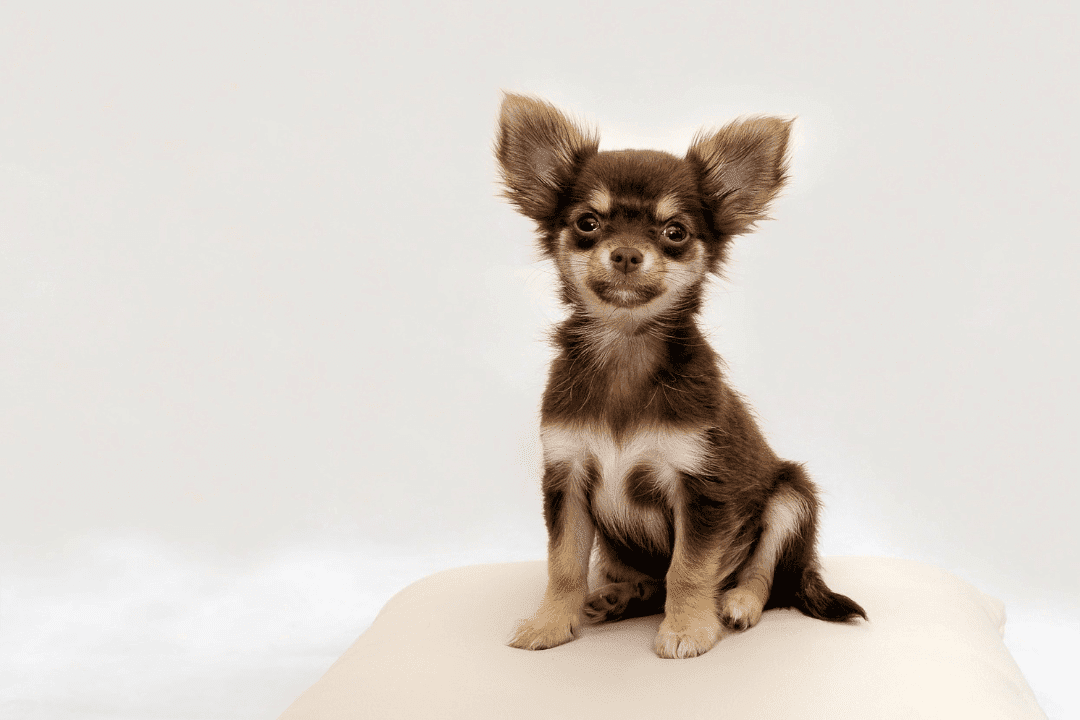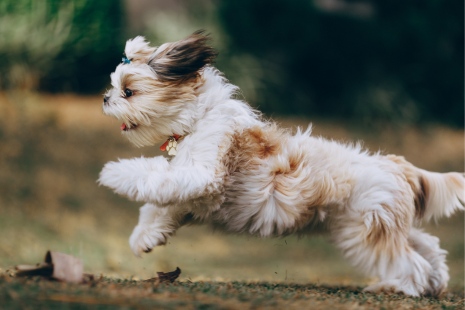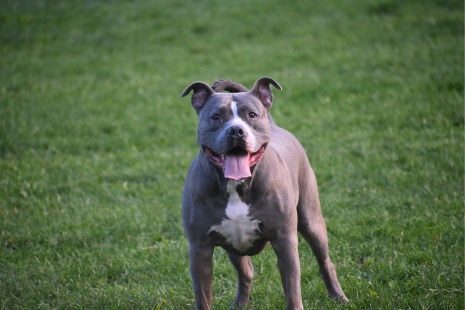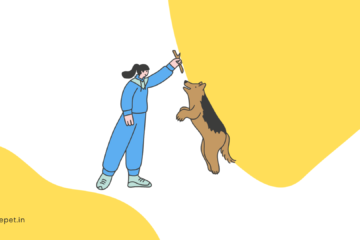What is a dog?
A dog is a furry, four-legged animal that is often kept as a pet or a working companion. It belongs to the animal kingdom, specifically the animal family called “Canidae”, also called “canid.” The scientific or zoological name for a dog is “Canis lupus familiaris.”
Dogs belong to the following categories
- Family: Canidae
- Kingdom: Animalia
- Phylum: Chordata
- Order: Carnivora
- Genus: Canis
Dogs come in both male and female genders. The male is called a dog and the female is called a “bitch“. In Hinglish (a mix of Hindi and English), male dogs are sometimes called “kutta” and female dogs are called “kutti.”
Dogs in the juvenile stage are called puppies. Puppies are cute and tiny versions of dogs. A group of dogs is usually called a “pack.”
Dogs can live to be quite old. The typical age ranges around 10 to 13 years, although some can live longer with proper care.
The oldest known dog breeds are believed to be the Saluki as recognized by the Guinness Book of World Records. They have been around since 329 B.C. The newest dog breeds as recognized by American Kennel Club in 2022 are Mudi and Russian Toy.
Different types of dogs have various uses based on their skills and traits. Dogs like Border Collies, Labrador Retrievers, German Shepherds, and Beagles are usually considered most useful. Some are great at herding livestock (Border Collie), some are skilled hunters (Beagle), and others are trained to assist people (Golden Retriever or Labrador Retriever).
Evolution of dogs
Timeline:
Dogs are believed to have existed for more than 12,000 years. However, a DNA analysis published in 1997, suggests that that dogs have been transformed from wolves around 130,000 years ago.
The oldest dog skeletons were discovered in Siberia’s Altai Mountains and a cave in Belgium, dating back around 33,000 years. Studies suggest that humans might have started making friends with dogs in different locations at the same time.
Ancestry:
As said, the wild ancestor of dogs is wolves. Dogs, as they are known to humans today, once used to be merely domesticated wolves.
Habitat:
A dog’s habitat has evolved alongside humans. In the past, wild dogs lived in various environments, from forests to grasslands. For shelter, they sometimes dug burrows. With evolution, as they became domesticated, they adapted to living in human settlements and homes. Nowadays, dogs can be found all over the world, both in cities and rural areas.
Domestication:
Domestication happened gradually and was a slow process. Early humans befriended wolves for their usefulness, which eventually led to the creation of dogs with helpful traits. Puppies and baby dogs were presumably cherished for their cuteness and usefulness.
Present Scenario:
In the current world, dogs have achieved remarkable feats, like guiding the visually impaired, herding animals, and even detecting diseases. They aid humans in the police and military. Furthermore, they are employed by old and disabled people for care and support.
Is a dog a mammal?
Yes, a dog is a mammal. The basic characteristics of a mammal are giving birth, growing hair, and the female having mammary glands. Dogs suffice all aspects of being mammals. Furthermore, they are warm-blooded and have an advanced brain and a vertebrae column.
What do dogs do?
Dogs provide companionship in society and can be trained to do a lot of other things. They have an impact on the social, emotional, and cognitive growth of people, and encourage an active way of living.
Dogs communicate by licking, sniffing, body posture, tail moving, barking, growling, howling, and whining. Studies confirm that dogs, including therapy dogs, ease stress and anxiety. Petting a dog lowers blood pressure, and heart rate, and promotes relaxation.
Where do domesticated dogs live?
Historically, domesticated dogs lived in kennels. These are shelters for the dogs to protect them from the environment and provide a safe place to live and sleep. Kennels are usually made of wood, metal, or other sturdy materials.
At present, dogs usually live with their owners. Those that do not have owners live in shelters to get adopted and in the open.
What are the characteristics of a dog?
Although the characteristics of dogs differ with respect to breed and type. There are some common characteristics of the species. These characteristics have been divided based on various factors into three broad categories, Physical, Senses, and Anatomy.
Physical Characteristics
- Body Size: Dogs vary greatly in size, from the tiny Chihuahua, weighing around 2-6 pounds, to the massive Saint Bernard, which can weigh over 200 pounds.
- Locomotion: Dogs have evolved to be skilled runners and walkers. Their powerful muscles and flexible spine allow them to sprint, jump, and maneuver swiftly.
- Pads and Nails: The pads on a dog’s paws provide cushioning and protection. Nails are important for traction, digging, and grasping objects. Regular nail trimming is essential to prevent injury.
- Skin and Hair: Dogs possess a diverse range of coats, including short, long, curly, and straight fur. These coats serve to shield them from weather conditions and pests. Shedding helps them replace old hair with new.
- Teeth and Mouth: Dogs are meat-eaters with teeth made for tearing. They start with 28 baby teeth, then grow 42 adult teeth between 2 and 7 months old. These teeth have specific jobs: the front ones, like the incisors and canines, grip and tear, while the back premolars and molars grind food for swallowing.
Senses
- Sight: Dogs have remarkable night vision due to specialized cells in their eyes, allowing them to see in low light. While they lack detailed vision, they excel in detecting motion.
- Hearing: Dogs’ acute hearing can perceive sounds beyond human range, including high-frequency noises. Their ears have a complex structure that collects and directs sound.
- Taste and Smell: Dogs possess an extraordinary sense of smell, with up to 300 million scent receptors, compared to humans’ 5 million. This makes them excellent trackers and sniffers. Their sense of taste is less developed, but their keen sense of smell compensates for it.
Anatomy
- Metabolism: Dogs’ higher metabolism leads to faster breathing, quicker heart rates, and more rapid overall development. However, it also contributes to their shorter lifespan, typically around 10-13 years.
- Temperature: Dogs are better at conserving heat than cooling down. They rely on panting and external sources of cooling, like shade and water, to prevent overheating. Brachycephalic breeds (with short noses) are particularly prone to heat-related issues.
- Digestion and Excretion: The digestive tract processes food, extracting nutrients. Dogs are omnivores, meaning they can eat both meat and plant-based foods. Their urinary system filters waste from the blood, eliminating it through urine.
- Anal Glands: These glands produce a distinct scent and are often emptied naturally during bowel movements. However, they can become impacted, leading to discomfort or infection. Regular vet care ensures their health.
The above-mentioned characteristics are general for all dogs independent of the breed. Distinct characteristics in different types of breeds cause them to fall into further categories. We will learn more about them in the next section.
What are the different types of dogs?
Dogs were bred and inbred to perform various actions and duties for their owners. Sometimes some specific characteristics are naturally built within them or they are acquired by breeding. According to these functions, dogs are categorized into 4 major types.
- Sporting Dogs
The Sporting Group contains dogs that are expert helpers for hunters. They’re trained to find, chase, and bring back birds like ducks or pheasants. These dogs are like a hunter’s trusty sidekick, making the job easier and more successful. They usually have thick and water-repellent fur and have very alert and stable temperaments.
Common sporting dog breeds:
- Golden retrievers
- Labrador retrievers
- Cocker Spaniel
- English Setter
- Hound Dogs
The Hound Dogs are also helpers of hunters, but they have been specifically bred to carry warm-blooded hunts like rabbits, raccoons, or antelopes. Sporting dogs mainly only hunt birds. Hounds are a diverse group of dogs specializing in scents, sight, and speed. They are known as stubborn as they would stop at nothing till they find their prey.
Common hound dog breeds:
- Beagles
- Daschunds
- Basenji
- Greyhounds
- Guard Dogs
Guard dogs were bred to provide protection to homes, livestock, etc. These dogs are usually on high alert all the time. They are loyal and very protective of their owners and were usually trained to attack in case of danger.
Common guard dog breeds:
- Mastiff
- Rottweiler
- Doberman Pinscher
- German Shepherd
- Boxer
- Lap Dogs
Lapdogs are small, cuddly breeds that love being on your lap. They’re affectionate, gentle, and enjoy being close to people. They make great indoor companions due to their calm and friendly nature.
Common lapdog breeds:
- Chihuahua
- Pomeranian
- Shih Tzu
- Maltese
Are there different breeds of dogs?
Yes, there are different breeds of dogs in the world. According to the Fédération Cynologique Internationale (FCI), there are 360 dog breeds in the world currently. Breeds have their own unique combination of physical traits, behavior traits, and other characteristics. These differences have been developed over centuries for purposes, such as herding, hunting, guarding, or companionship.
Dog breeds vary in size, coat type, color, and more. Behavior-wise, they have different temperaments and skills, like herding or guarding. Some breeds are more prone to specific health issues than others. The pricing of breeds depends on their rarity and demand, with rare breeds often costing more.
What is the biggest dog breed?

The Great Dane is the biggest dog breed in the world. The biggest of them all was recorded by the Guinness Book of World Records as 44 inches tall. The male Great Dane weighs around 60-90 kgs. They are of German origin and have a history of existing for the last 400 years. They are descendants of Mastiff dogs and were used for protecting estates and hunting.
The Great Dane comes at a price between ₹15,000 to ₹40,000 in India. The Dane is also known as a gentle giant for their moderate temperament and is friendly towards children. Their average lifespan is around 8-10 years.
What is the smallest dog breed?

The Chihuahua is the smallest dog breed in the world. The smallest one recorded in the world weighed only about one pound and measured 3.8 inches tall. Chihuahuas are of Mexican origin and are usually considered toy dogs. They usually have a courageous, lively, and aggressive temperament and need to be treated respectfully.
The price of a Chihuahua in India can range between ₹10,000 to ₹30,000 in India. They have an average lifespan of around 12 – 15 years.
What is the cutest dog breed?

While all dog breeds are cute, the Shih Tzu dog breed is known as the cutest dog breed in the world. This dog breed has been bred from the Pekingese and the Lhasa Apso breeds. Shih Tzu’s are of Tibet origin. They are small, toy breeds that weigh around 4-7 kgs with a maximum height of 28cms. They are very affectionate, playful, and friendly.
What is the most dangerous dog breed?

American Pitbull Terrier are known as the most dangerous dog breed in the world. They have called over 71% of fatalities in 2016. Pitbulls were originally bred for killing, hence, their natural instincts still remain to bite hard. These dogs are medium-sized, have short hair, and a solid body. They have a lifespan of 8-16 years.
While pit bulls have been recognized as dangerous because of fatalities and their natural instincts when trained they can be just as friendly. According to the American Canine Temperament Test Society, this breed is recognized for its exceptionally stable temperament, comparable to that of golden retrievers.
Are all dog species the same?
Yes, all dogs fall under the same species under one animal family called Canidae. However, different types of dogs fall under different breeds. All breeds have their own distinct physical traits and characteristics. All types of dog breeds can mate with each other and create offspring, hence they fall under the same species. In the next section, we learn more about dog breeding and reproduction.
Dog Reproduction
Dog reproduction refers to the process by which canines reproduce through breeding. It involves the female dog’s heat cycle, during which she becomes fertile and can conceive.
The fertility age for male dogs is usually after 6-12 months of age, while female dogs are typically fertile after 6 months to 18 months. Dogs reach sexual maturity between 6-12 months. The mating period occurs during the female’s heat cycle.
After mating, the dog’s pregnancy lasts around 40 days. A dog can give birth to 1-12 puppies. The number depends on the breed of the dog. The delivery, or whelping, usually takes place approximately 63 days after mating. Dog labor or whelping can last from 6 to 12 hours.
Dog period cycle
The dog period or menstrual cycle is known as the oestrus cycle and refers to the reproductive cycle in female dogs. During this cycle, the female dog goes through a heat cycle, which is the period of fertility.
Unlike humans, dogs don’t have a menstrual period as humans do. Instead, they experience changes in behavior, and vulvar swelling, and may release eggs, called ova. The heat cycle typically lasts around 2-4 weeks, during which mating can result in pregnancy.
Some dog owners use specially designed dog period pads to manage any discharge. To prevent bleeding, it’s advisable to keep a dog in heat indoors or consider using doggie diapers or sanitary garments.
What does dog neutering mean?
Dog neutering refers to the surgical removal of a male dog’s testicles. This procedure reduces the risk of testicular cancer. Another benefit is that it can help reduce aggressive behavior in some male dogs.
What does dog spaying mean?
Dog spaying involves the surgical removal of a female dog’s ovaries and usually the uterus. The benefit of this procedure is that it significantly lowers the risk of mammary (breast) cancer in female dogs.
Can dogs have false pregnancies?
Yes, female dogs can have false pregnancies. False pregnancies in dogs start about 45 to 60 days after their last heat cycle. They look like real pregnancies but aren’t. These fakes can last one week to one month and can happen at any age or after any heat cycle.
Can all dogs mate with each other?
Yes, all dogs can mate with each other. Different-looking dog breeds can still have offspring together because their genes haven’t changed much, allowing them to have healthy puppies. However, crossbreeding can sometimes lead to issues genetic issues, delivery problems, and puppy size problems.
What breed are street dogs?
Street dogs in India are of the breed “Indian Pariah.” They are also called indies. However, a large number of street dogs are mixed with domestic pet dogs. Hence, they’re altogether known as Indies.
What is the dog breeding season in India?
Dog breeding means mating two specific dogs to keep or create certain traits and features. The dog breeding season in India begins towards the end of the monsoon, around the beginning of September.
Can we breed between different dog breeds?
Yes, we can breed between two different dog breeds. Crossbred dogs have parents from two different breeds, sometimes even through multiple generations. They inherit traits from both parents, so it’s important to consider how this mix might influence the puppies.
How do the prices of dogs change with dog breeding?
Dog prices change based on breed rarity, demand, health, lineage, quality, and location. Additionally, purebreds are of higher price as their mother and father are purebreds too and of the same breed.
What is the difference between purebred and hybrid dogs?
Purebred dogs come from parents of the same breed, with consistent traits and characteristics. Hybrid dogs, also known as crossbreeds or mixed breeds, have parents from different breeds, resulting in a mix of traits. Purebreds often have predictable traits, while hybrids can have a wider range of characteristics from their parent breeds.



0 Comments